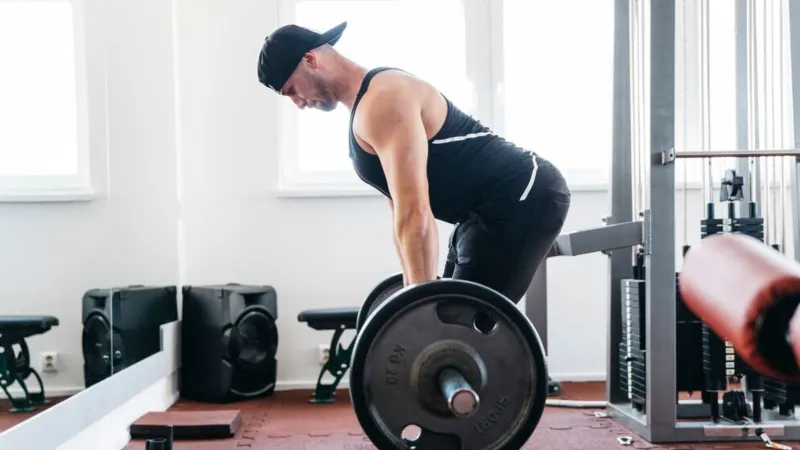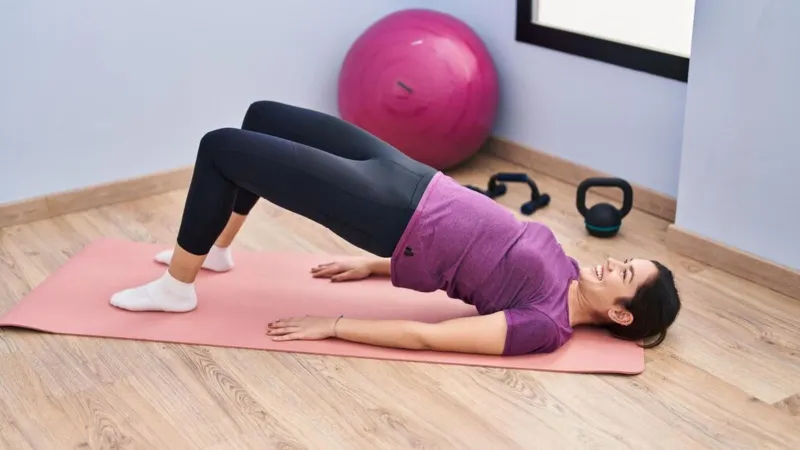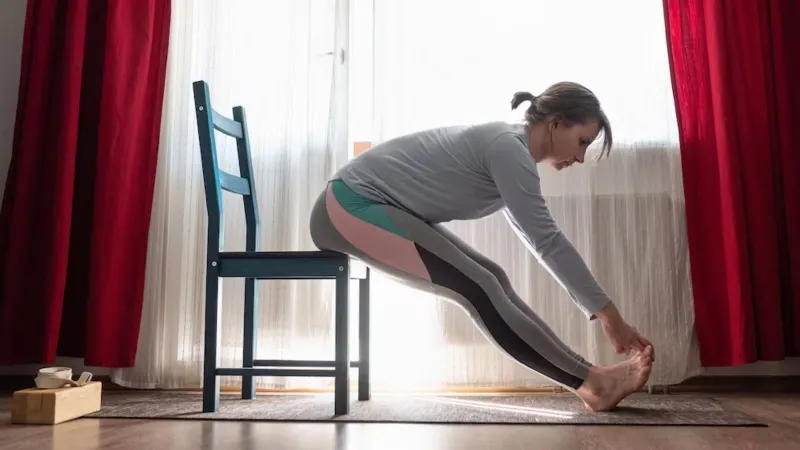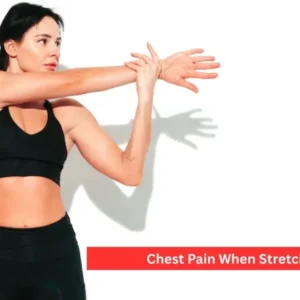Hyperextensions are also referred to as back extensions and are ranked among the most effective physical exercise routines that work the lower back and hamstrings. As for the primary patterns, some individuals may consider hyperextensions very uncomfortable or even painful to complete. In this case, some other related exercises can be performed with somewhat similar or similar effect without stressing the area in question. One is to look for other exercises that involve precisely these muscles or groups of muscles, such as the lower back, hip, and hamstring muscles.
Some of the good substitutions are bench reverse hyperextension, which is of great utility and works the posterior chain.
Here follow the seven hyperextension alternatives that one can use in building the lower back and hamstrings and, at the same time, add variety to the person.

Hyperextension Alternatives to Do
1. Bird Dog
Some of the core muscles recruited included the back and the abdominal muscles, together with the hip muscles.
How to do it:
- Stand on the pad in a tuck-to-tabletop position with your palms located under the shoulders and knees below the hips, thus applying body weight to the weights.
- With your right hand, take the left leg backwards, and at the same level as your shoulder, raise the right hand with your arm parallel to the ground.
- In this case, let the base be well developed to balance the rest of the lower extremity effectively.
- Additional tips to take when performing topping include maintaining the hang at ranges for a few seconds before coming to the starting position.
- Perform the same actions on the other side of the body, where the opposite arm and leg are going to be involved.
2. Romanian Deadlift
The muscles that are most commonly targeted are those of the lower back, hamstrings, and glutes, and also the upper back muscles.
How to do it:
- Initially, the individual’s feet should be spread roughly in a shoulder-width distance apart, and they should hold one dumbbell firmly in both hands as if placing it at the hip joint level.
- About alignment, a player’s chest should be raised, his back slightly curved, and his stomach muscles should not be contracted.
- As the next move, to perform the bicep curls, move your hips and lower the dumbbells beside your thighs in front of your body. Make sure that your spine is straight and your legs are slightly bent throughout the exercises.
- To do this, bring the dumbbells down to the point that you feel pulling at the back of your legs, or if flexibility is not as strong an attribute as one desires it to be, down to a comfortable position.
- For the following bicep curl, again, to return to the squatting position, one has to pull the hips backwards.

3. Glute Bridge
Specifically, the target muscle groups that were exercised included the lower back, hip, and posterior leg muscles, especially the hamstrings.
How to do it:
- Close your knees and place your feet slightly wider than shoulder-width apart, keeping yourself lying flat on the floor.
- To start the pose, stand with your thumbs in the backwards direction, curled, and your fingers resting on your hips.
- Contract the abdominal muscles, use your toes to touch your heels to the buttocks to get off the floor, and stand straight down to the knees.
- Ensure that you bend your legs as little as possible while operating your hips to enable less bending of your legs during the operation.
- Squeeze your glutes throughout the movement.
4. Stability Ball Hamstring Curl
Muscles involved with this activity: the lower body muscular groups, with special emphasis put on the hamstrings and gluteal muscles.
How to do it:
- They include lying on your back with your legs off the floor, with your heels placed on the stability ball.
- This position of balance is achieved once the arms are extended and regarded as being distant from the body.
- However, there are many such moments. Basic tips for stretching are as follows: it is necessary to get on the gym floor and ensure that the body lies 90 degrees to the bench and the shoulders, hips, and heels. Bend the knees and perform rolling of the exercise ball in the bottommost part of the body to target the hamstrings.
- To assume the stretching position, transfer your body onto the toes and straighten your legs as much as you can to place the ball to be located as far as possible from the hips.
5. Kettlebell Swing
This type of exercise has an impact on the following muscles: lower back muscles, hamstrings, hip muscles, and the shoulders.
How to do it:
- First, the position of your feet should be based or rather placed on, the floor or the ground, and your target will be a kettlebell in your right and left hands, and it will be held in front.
- Keep a forward and uplifted chest, the shoulders withdrawn and prepared to sit up.
- Bend your knees and rotate the kettlebell around the body, using only the wrists from the primary pivotally located on the hips.
- Hold it at the lowest point for the next movement instantly; quickly snap the hips back, and while doing this, twist the shoulders and use the momentum to snap the kettlebell upward.
- The position of the kettlebell should be 90 degrees from the ground while overhead, the height of the kettlebell should be slightly above the chest level, and one should not bend the arms while lifting.
- To make it more challenging, one can put weight on the plate to offer the body a higher resistance.

6. Seated Good Mornings
Muscles Targeted: Lower back, hamstrings, and glutes.
How to do it:
- Close your stance with your feet placed flat on the ground and the backrest of the chair behind your feet.
- This can be done standing with the support of a barbell placed behind the neck or sitting with a dumbbell or kettlebell pressed against the chest.
- If not, you may also do similar exercises using a reverse hyperextension machine that mainly focuses on the gluteus maximus and hamstring muscles. They can also be done with the help of equipment such as stability balls, hyperextension benches, and even tables to provide maximum benefits to muscles and muscle strengthening as well as spinal decompression.
- This will assist in ensuring that the back is straight and the abdominal region is rigid.
- Bend at the hip joint; that is, flex your upper body and move your chest towards your thighs.
- Keep your legs slightly bent during the repetition of the movement.
- To assume an upright position, align your hips to come into an erect position and your back as well.
7. Single-Leg Deadlifts
Muscles worked on during the exercise include the lower back muscles, hamstrings, glutes, upper body, and balance muscles.
How to do it:
- The initial position of the two feet should be slightly more than shoulder-width apart, and take the dumbbell in your right hand only.
- Let down your right foot and support it on your left leg so that your weight will be on this left foot.
- Drawing the belly in, keep your back straight and tilt forward at the hips to lower the dumbbell down.
- Bend your right leg to the rear to ensure you have a proper counterweight for this movement.
- The movement of the hips backwards and forwards would commence and end at the starting positions as you pull through with the drumsticks.
- Repeat on the other leg.
That is why reverse hyperextensions are also universal; they can be done with the help of stability balls, hyperextension benches, or even tables, which can make spinal decompression and muscle strengthening possible.

Conclusion
So, just like other exercise regimens, one must integrate these hyperextension options into a fitness regimen that corrects the lower back and hamstrings just as well as the hip muscles, and they would make a good replacement for hyperextensions in case they are anathema to your health considerations. Similarly, when training, ensure you get the right form and the number of weights or resistance that you will start with, and progress through increasing the intensity of the exercises day by day. Like any other form of workout, it is recommended that you seek the opinion of a fitness trainer or a physician if you have certain issues, traits, or health risks that may cause certain issues while exercising.
Frequently Asked Questions
1. Why should I look for alternatives to hyperextensions?
Hyperextensions have some drawbacks, which impact some individuals as they put much pressure on the lower back. They help you train your muscles that are the lower back, hamstrings, and hips with little or no impact on sensitive areas.
2. Which muscles do hyperextension alternatives primarily target?
All the alternatives target the lower back, glutes, hamstrings, and hip muscles on most occasions. For instance, some of them, such as the kettlebell swing and the Romanian deadlift, also involve the shoulders and upper back muscles for balance and coordination.
3. Do I need gym equipment to perform these exercises?
Not necessarily. Others, such as the Hound Dog and the Glute Bridge, are equipment-free. Some, like the Romanian deadlift or stability ball hamstring curl, only need simple items like dumbbells or a stability ball.
4. Are these exercises suitable for beginners?
Indeed, a majority of the mentioned hyperextension alternatives can be eased for beginners. First, it is advised to perform exercises with your body weight, for instance, glute bridges and seated good mornings, and only incorporate resistance further down the line after working on it little by little.







